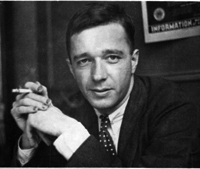By VAN GORDON SAUTER
There is a slightly unhinged subset of our society that abhors interstate highways and instinctively reverts to two-lane roads, those narrow, jagged, seemingly aimless black lines flung across the map, joining small towns identified in excruciatingly small type. The rural routes are puny and undisciplined in contrast to the bold slashes of red interstate routing, racing across the map with no tolerance for diversions or indulgences, to link the big cities.
We live in a time when many of those small towns are vanishing, vaporized in a society of industrial farming, urbanization and young people craving neon glow and the comparatively gilded payrolls of the metropolis. In silence, with little notice or mourning, the abandoned towns wither in their futility. Storefronts are stripped of products. Homes are overgrown, schools decommissioned. The memories of small-town America are increasingly retained in the minds of the geezers and grannies who once celebrated them.
But the Sun Valley Center for the Arts now has on its walls a remarkable exhibition of photographs that provoke instant nostalgia for anyone who experienced those small towns. Or those who are curious about how many of us used to live. Photographer Jim Dow's color images, many from North Dakota, the northern tenant of the vast Buffalo Commons, reflect a two-lane road society being shed like so much detritus. We see bars, barbershops, restaurants, pool halls and home architecture shaped by remarkably loving hands. Not to mention bizarre interior décor. All provoke pangs of sadness, for you know these artifacts of Americana soon will be gone.
The other side of the show is a vivid collection of photographs by Walker Evans from an earlier America and a more disturbing one. He roamed the Dust Bowl, the moody and destitute south, and the stark landscape of a Pennsylvania steel valley. And unlike Dow, Evans has faces, black and white, most of them haunted and apprehensive. Walker is one of our most revered and familiar photographers, but one never grows immune to the bluntness and insight of his work. The faces and scenes are haunting, particularly those illustrating the Great Depression's desolation, the murky Deep South and the Joad-like families from the stoop-labor camps in California's Central Valley.
A highlight of this show are a few of his images from Bethlehem, Penn., including the iconic photo of weedy St. Michael's Cemetery, with a granite cross in the foreground, and beyond it, drab worker housing and then the imposing outlines of blast furnaces. For people like me who grew up in a steel town, this will always be the defining image of Steel Town, USA.
It's not a big show in terms of size, but a gallery visitor will quickly be drawn into those little rural establishments and down the sooty streets of a rugged steel town. This is an exhibit deserving of your time. It is a reminder of how blessed we are to be living in this green valley of comfort and opportunity. And how blessed we are by photographers who capture the sense of a country that many of us left in the rearview mirror. It is a part of our history—the memorable, the joyful and the agonizingly bittersweet.
The Sun Valley Center for the Arts "Rural Venacular" exhibition is open through Aug. 8. For details, times and tours call 726-9491.


 Portrait of Walker Evans’ by Janice Loeb circa 1937. Evans work is in the Sun Valley Center for the Arts multidisciplinary exhibition “The Rural Venacular” through Aug. 8. Photo by
Portrait of Walker Evans’ by Janice Loeb circa 1937. Evans work is in the Sun Valley Center for the Arts multidisciplinary exhibition “The Rural Venacular” through Aug. 8. Photo by



































